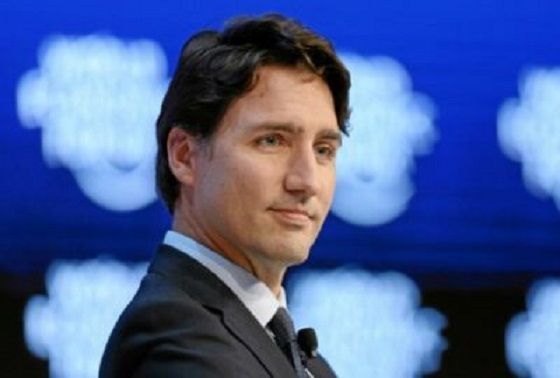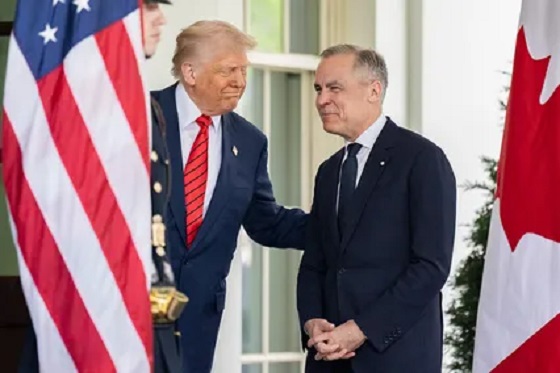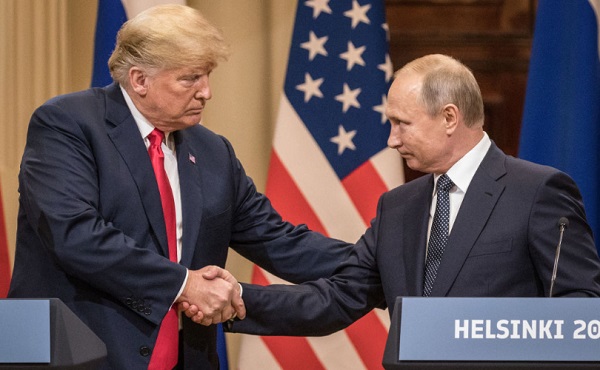Business
Federal government’s redistribution economics doesn’t work

From the Fraser Institute
By Jason Clemens, Jake Fuss, and Milagros Palacios
Prime Minister Trudeau’s vision for a more prosperous Canada relies on a much larger role for the federal government, with more spending, regulation, borrowing and higher taxes. By moving existing money around—both from higher-income workers to average Canadians and from the future to the present through borrowing—he believes the Canadian economy will be stronger and living standards will rise. But after nine years of governing, the evidence is clear—the prime minister’s redistribution economics doesn’t work and has actually reduced living standards in Canada.
Let’s first understand the magnitude of the changes made by the Trudeau government. Federal spending (excluding interest costs on debt) has risen from $256.2 billion in the last year of the Harper government to an estimated $483.6 billion this year, an increase of 88.7 per cent.
Even excluding COVID-related spending, the Trudeau government has recorded the five highest years of federal spending (on a per-person basis, after adjusting for inflation) in the history of the country, far surpassing spending during both world wars and the Great Recession.
Under Trudeau, the federal government has introduced several new programs (including dental care, daycare and pharmacare), and expanded several existing programs such as the cash transfer to families with children under 18 and corporate welfare.
Redistributing existing income has been a clear policy goal of the Trudeau government. From 2015 to 2022, average government transfers to families with children have increased from $12,685 to $15,750 (inflation-adjusted), an increase of 24.2 per cent. Yet among these same families, employment income only increased 8.0 per cent during the same period, meaning government transfers grew more than three times faster than their employment income. And as a share of household income, government transfers have increased from an average of 8.0 per cent between 1995 and 2007, when employment income was growing much faster, to 10.3 per cent in 2022.
The Trudeau government has financed this explosion in federal spending by borrowing, which is simply taxation deferred to the future, and tax increases.
Specifically, the government increased personal income taxes on professionals, entrepreneurs and successful business owners. It also increased taxes on businesses, which is an indirect and less transparent way of increasing taxes on average people since businesses don’t actually pay taxes, only people pay taxes. Higher business taxes mean less investment and thus lower wage growth for workers, lower payments to the business owners, and/or higher prices for consumers buying goods and services.
The Trudeau government also opaquely increased taxes on average Canadians. While it lowered the second personal income tax rate, it simultaneously eliminated several tax credits. As a result, 86 per cent of middle-income families experienced an increase in their personal income taxes as did 75 per cent of families with children in the bottom 20 per cent of income-earners.
But again, the government financed much of its new spending by borrowing, which means future tax increases. Consider that total federal debt stood at a little over $1.0 trillion when the Trudeau government took office in late-2015. By the government’s own estimates, total federal debt will reach almost $2.1 trillion next year.
Higher debt means higher interest costs, which divert money away from programs such as health care or badly needed tax relief. From 2015-16 (when Trudeau was first elected) to this year, federal debt interest costs have increased from $21.8 billion to an expected $54.1 billion. For context, this year the federal government expects to raise $54.1 billion from the GST, which means that every cent raised from the national sales tax will go to pay interest costs on the federal debt.
By focusing on moving around existing income (i.e. redistribution) rather than promoting income growth through investment and entrepreneurship, the Trudeau government has helped produce an outright economic growth crisis. Canada’s current decline in per-person GDP, a broad measure of living standards, is one of the longest and deepest declines of the last 40 years. Moreover, as of the end of 2023, the latest year of available data, the decline in living standards had not stopped so there’s a chance this could be the worst fall in living standards since at least the early-1980s.
According to a 2023 study, growth in per-person GDP from 2013 to 2022 was at its lowest rate since the Great Depression. Indeed, Canada’s post-COVID recovery was the 5th-weakest in the industrialized world. And prospects for the future are no better. A recent study by the OECD estimated that Canada would have the slowest growth in living standards among 32 high-income countries for the foreseeable future.
Simply put, the Trudeau government’s policies, which focused on government-led prosperity and moving income around instead of growing incomes, have led to a decline in living standards and economic malaise. Canadians are struggling when we should be leading the world in growth and prosperity. The only way to reverse our economic decline is to embrace a markedly different approach to policy focused on economic growth through entrepreneurship, investment and innovation.
Authors:
Business
Trump confirms 35% tariff on Canada, warns more could come

Quick Hit:
President Trump on Thursday confirmed a sweeping new 35% tariff on Canadian imports starting August 1, citing Canada’s failure to curb fentanyl trafficking and retaliatory trade actions.
Key Details:
- In a letter to Canadian Prime Minister Mark Carney, Trump said the new 35% levy is in response to Canada’s “financial retaliation” and its inability to stop fentanyl from reaching the U.S.
- Trump emphasized that Canadian businesses that relocate manufacturing to the U.S. will be exempt and promised expedited approvals for such moves.
- The administration has already notified 23 countries of impending tariffs following the expiration of a 90-day negotiation window under Trump’s “Liberation Day” trade policy.
Diving Deeper:
President Trump escalated his tariff strategy on Thursday, formally announcing a 35% duty on all Canadian imports effective August 1. The move follows what Trump described as a breakdown in trade cooperation and a failure by Canada to address its role in the U.S. fentanyl crisis.
“It is a Great Honor for me to send you this letter in that it demonstrates the strength and commitment of our Trading Relationship,” Trump wrote to Prime Minister Mark Carney. He added that the tariff response comes after Canada “financially retaliated” against the U.S. rather than working to resolve the flow of fentanyl across the northern border.
Trump’s letter made clear the tariff will apply broadly, separate from any existing sector-specific levies, and included a warning that “goods transshipped to evade this higher Tariff will be subject to that higher Tariff.” The president also hinted that further retaliation from Canada could push rates even higher.
However, Trump left the door open for possible revisions. “If Canada works with me to stop the flow of Fentanyl, we will, perhaps, consider an adjustment to this letter,” he said, adding that tariffs “may be modified, upward or downward, depending on our relationship.”
Canadian companies that move operations to the U.S. would be exempt, Trump said, noting his administration “will do everything possible to get approvals quickly, professionally, and routinely — In other words, in a matter of weeks.”
The U.S. traded over $762 billion in goods with Canada in 2024, with a trade deficit of $63.3 billion, a figure Trump called a “major threat” to both the economy and national security.
Speaking with NBC News on Thursday, Trump suggested even broader tariff hikes are coming, floating the idea of a 15% or 20% blanket rate on all imports. “We’re just going to say all of the remaining countries are going to pay,” he told Meet the Press moderator Kristen Welker, adding that “the tariffs have been very well-received” and noting that the stock market had hit new highs that day.
The Canadian announcement is part of a broader global tariff rollout. In recent days, Trump has notified at least 23 countries of new levies and revealed a separate 50% tariff on copper imports.
“Not everybody has to get a letter,” Trump said when asked if other leaders would be formally notified. “You know that. We’re just setting our tariffs.”
Business
Trump slaps Brazil with tariffs over social media censorship

From LifeSiteNews
By Dan Frieth
In his letter dated July 9, 2025, addressed to President Luiz Inácio Lula da Silva, Trump ties new U.S. trade measures directly to Brazilian censorship.
U.S. President Donald Trump has launched a fierce rebuke of Brazil’s moves to silence American-run social media platforms, particularly Rumble and X.
In his letter dated July 9, 2025, addressed to President Luiz Inácio Lula da Silva, Trump ties new U.S. trade measures directly to Brazilian censorship.
He calls attention to “SECRET and UNLAWFUL Censorship Orders to U.S. Social Media platforms,” pointing out that Brazil’s Supreme Court has been “threatening them with Millions of Dollars in Fines and Eviction from the Brazilian Social Media market.”


Trump warns that these actions are “due in part to Brazil’s insidious attacks on Free Elections, and the fundamental Free Speech Rights of Americans,” and states: “starting on August 1, 2025, we will charge Brazil a Tariff of 50% on any and all Brazilian products sent into the United States, separate from all Sectoral Tariffs.” He also adds that “Goods transshipped to evade this 50% Tariff will be subject to that higher Tariff.”
Brazil’s crackdown has targeted Rumble after it refused to comply with orders to block the account of Allan dos Santos, a Brazilian streamer living in the United States.
On February 21, 2025, Justice Alexandre de Moraes ordered Rumble’s suspension for non‑compliance, saying it failed “to comply with court orders.”
Earlier, from August to October 2024, Moraes had similarly ordered a nationwide block on X.
The court directed ISPs to suspend access and imposed fines after the platform refused to designate a legal representative and remove certain accounts.
Elon Musk responded: “Free speech is the bedrock of democracy and an unelected pseudo‑judge in Brazil is destroying it for political purposes.”
By linking censorship actions, particularly those targeting Rumble and X, to U.S. trade policy, Trump’s letter asserts that Brazil’s judiciary has moved into the arena of foreign policy and economic consequences.
The tariffs, he makes clear, are meant, at least in part, as a response to Brazil’s suppression of American free speech.
Trump’s decision to impose tariffs on Brazil for censoring American platforms may also serve as a clear signal to the European Union, which is advancing similar regulatory efforts under the guise of “disinformation” and “online safety.”
With the EU’s Digital Services Act and proposed “hate speech” legislation expanding government authority over content moderation, American companies face mounting pressure to comply with vague and sweeping takedown demands.
By framing censorship as a violation of U.S. free speech rights and linking it to trade consequences, Trump is effectively warning that any foreign attempt to suppress American voices or platforms could trigger similar economic retaliation.
Reprinted with permission from Reclaim The Net.
-

 Bruce Dowbiggin2 days ago
Bruce Dowbiggin2 days agoThe Covid 19 Disaster: When Do We Get The Apologies?
-

 Crime1 day ago
Crime1 day agoSweeping Boston Indictment Points to Vast Chinese Narco-Smuggling and Illegal Alien Labor Plot via Mexican Border
-

 Alberta1 day ago
Alberta1 day agoAlberta school boards required to meet new standards for school library materials with regard to sexual content
-

 Business15 hours ago
Business15 hours agoTrump slaps Brazil with tariffs over social media censorship
-

 Environment1 day ago
Environment1 day agoEPA releases report on chemtrails, climate manipulation
-

 International15 hours ago
International15 hours agoSupport for the Ukraine war continues because no one elected is actually in charge.
-

 Addictions17 hours ago
Addictions17 hours agoCan addiction be predicted—and prevented?
-

 Business18 hours ago
Business18 hours agoCBC six-figure salaries soar






